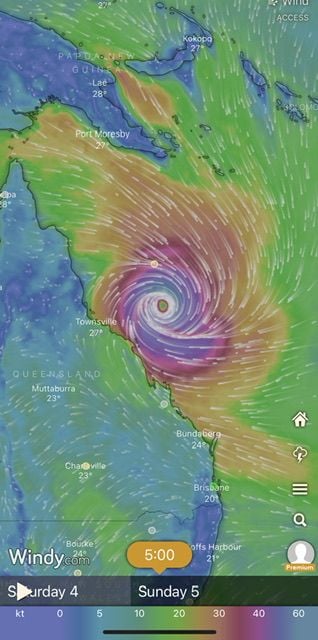Messy afternoon at NZAA
Since the PF is required to be able to actually see the runway they're landing on, if he/she can't see the runway because it's under water, don't you think a go-around might have resulted in a better outcome?? At very least their jet blast might have cleared the water. Familiarity, resulting in pushing just that little bit too hard/far, has been the cause of many a Code Brown (and worse). The same folks would probably happily drive at high speed through standing water on their way to the airport, never thinking that one day they might need to be rescued. 
p.s. I do love how there's one of these muppets every few years that think this forum is just like the aeroclub bar on a Friday and spew all the uninformed nonsense that you expect from weekend warriors at a fly in.
The following 5 users liked this post by j3pipercub:
I think the union has a great point, every major airport I have flown into around the world would have a runway condition report attached to an ATIS in these conditions with breakdowns of braking action and contamination. ZQN manages one with snow and ice but out main international airport can’t. You can’t judge water depth from an approach and ‘WET’ would tell you standing water of less than 3mm. Remember the Air France that went off the runway in Toronto? There were many factors but one of the findings was a contributing factor that contamination information wasn’t passed to the pilots and the airport would never ‘close’ the runway as it was up to the pilots….. bit hard to make an informed decision when the ATIF just says ‘wet!’
The following 3 users liked this post by Ollie Onion:
Braking action reports and runway conditions are two vastly separate issues.
Boeing provides data dry, damp, wet etc it has no relation to a RCC provided by vehicle doing a braking action report.
Operators have merged the data in the interest of safety but in reality theyíre meaningless. Even Boeing hasnít tested all stoping actions and a lot of it is calculated.
The question in this case is what runway condition was given to the crew, wet <3mm or contaminated?
Boeing provides data dry, damp, wet etc it has no relation to a RCC provided by vehicle doing a braking action report.
Operators have merged the data in the interest of safety but in reality theyíre meaningless. Even Boeing hasnít tested all stoping actions and a lot of it is calculated.
The question in this case is what runway condition was given to the crew, wet <3mm or contaminated?
Can we leave the pilot speak to the pilots please?
The following users liked this post:
I happily drive through standing water at high speed all the time. The more lefties, Greens voters, teal supporters, climate activists, friends of Greta, and Chinese etc I see on the footpath the faster I go. Never needed rescuing. WD40 in the dizzy cap is all you need.
The following users liked this post:
Gabrielle
Ex-tropical cyclone Gabrielle is on track to reap more chaos. There will inevitably be a lot of disruption in the next 48hrs.
Batten down the hatches and strap in.
Batten down the hatches and strap in.
The following users liked this post:
Amazing accusations from the Union to publicly call out the Airport for putting money ahead of safety…. Good on them.
https://www.stuff.co.nz/business/131...uring-flooding
https://www.stuff.co.nz/business/131...uring-flooding
The following users liked this post:
Join Date: Mar 2006
Location: Brisbane
Posts: 46
Likes: 0
Received 0 Likes
on
0 Posts
Join Date: Dec 1999
Location: I prefer to remain north of a direct line BNE-ADL
Age: 49
Posts: 1,286
Likes: 0
Received 33 Likes
on
10 Posts
Yes the biggest issue is as Aircrew we are supposed to hypothetically calculate water depth with rain rates etc, yet Auckland tower was unable to give a condition report on the runway. Hearsay says it was about 50mm depth at the time of the AirNZ landing. There is a disconnect between Flight Ops and everyone else on this. The best guesstimate was a safety car dude said the water depth was half way up his boot. Ridiculous.
Yes the biggest issue is as Aircrew we are supposed to hypothetically calculate water depth with rain rates etc, yet Auckland tower was unable to give a condition report on the runway. Hearsay says it was about 50mm depth at the time of the AirNZ landing. There is a disconnect between Flight Ops and everyone else on this. The best guesstimate was a safety car dude said the water depth was half way up his boot. Ridiculous.
In the interim, looks like we’ll be using “poor” breaking action for landing at AKL when its actively raining due to the combination of no accurate condition reports or runway grooving.
Runways plenty long enough but makes a significant difference to crosswind limitations.
Perhaps some commercial pressure from increased diversions might get the Airport company to take it seriously.
Runways plenty long enough but makes a significant difference to crosswind limitations.
Perhaps some commercial pressure from increased diversions might get the Airport company to take it seriously.
Another one forming in the coral next week, she looks ugly and will likely cause some damage, monsoon might push it Kiwi way, will need to wait until early next week to confirm the direction and potential size. Otherwise Cairns to Brisbane, get yourself ready folks.
Originally Posted by Poppa
Otherwise Cairns to Brisbane, get yourself ready folks.

Bloggs one model I was looking at yesterday had a different story. That model has changed in the last day with the system moving E. One thing is certain at this point, in that a low is developing in the coral. Probably come back early next week to see what the modelling shows, seems pretty volatile at the moment.


The following users liked this post:






